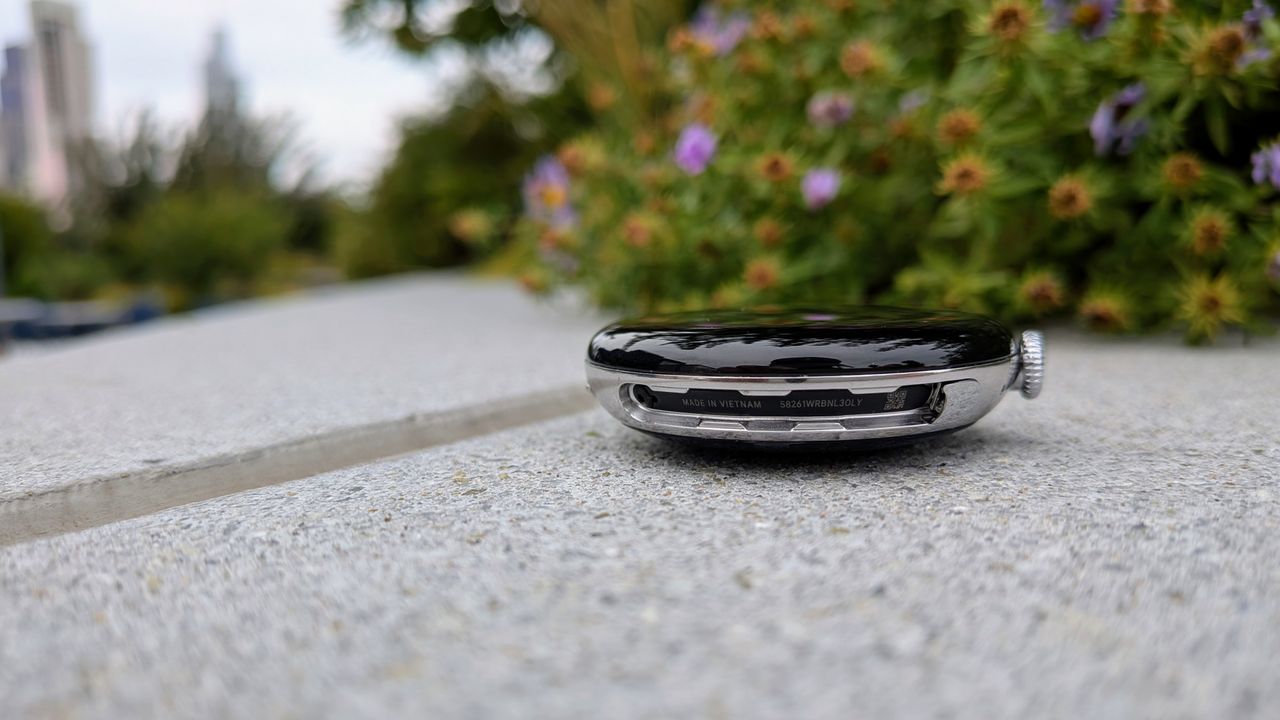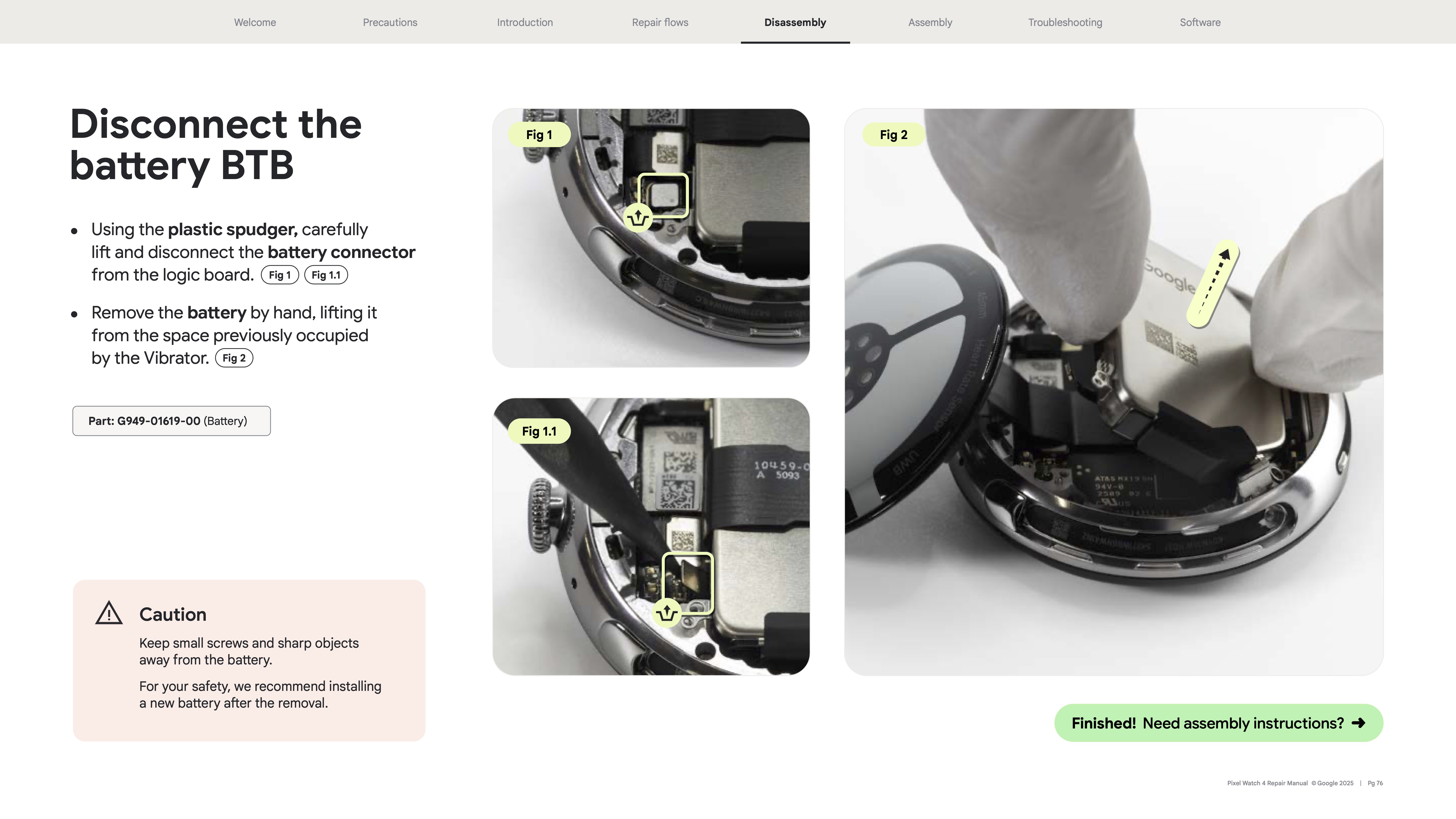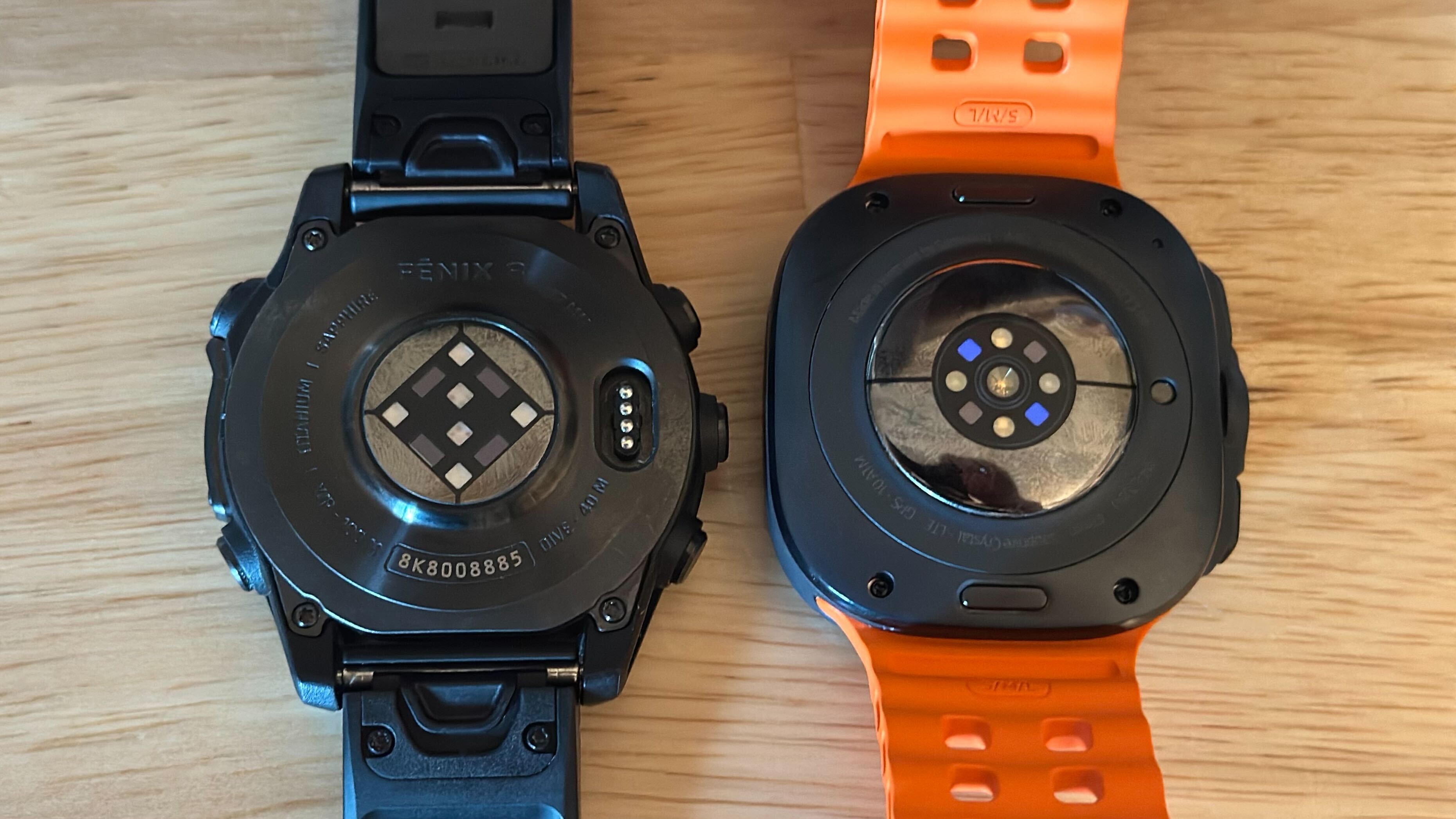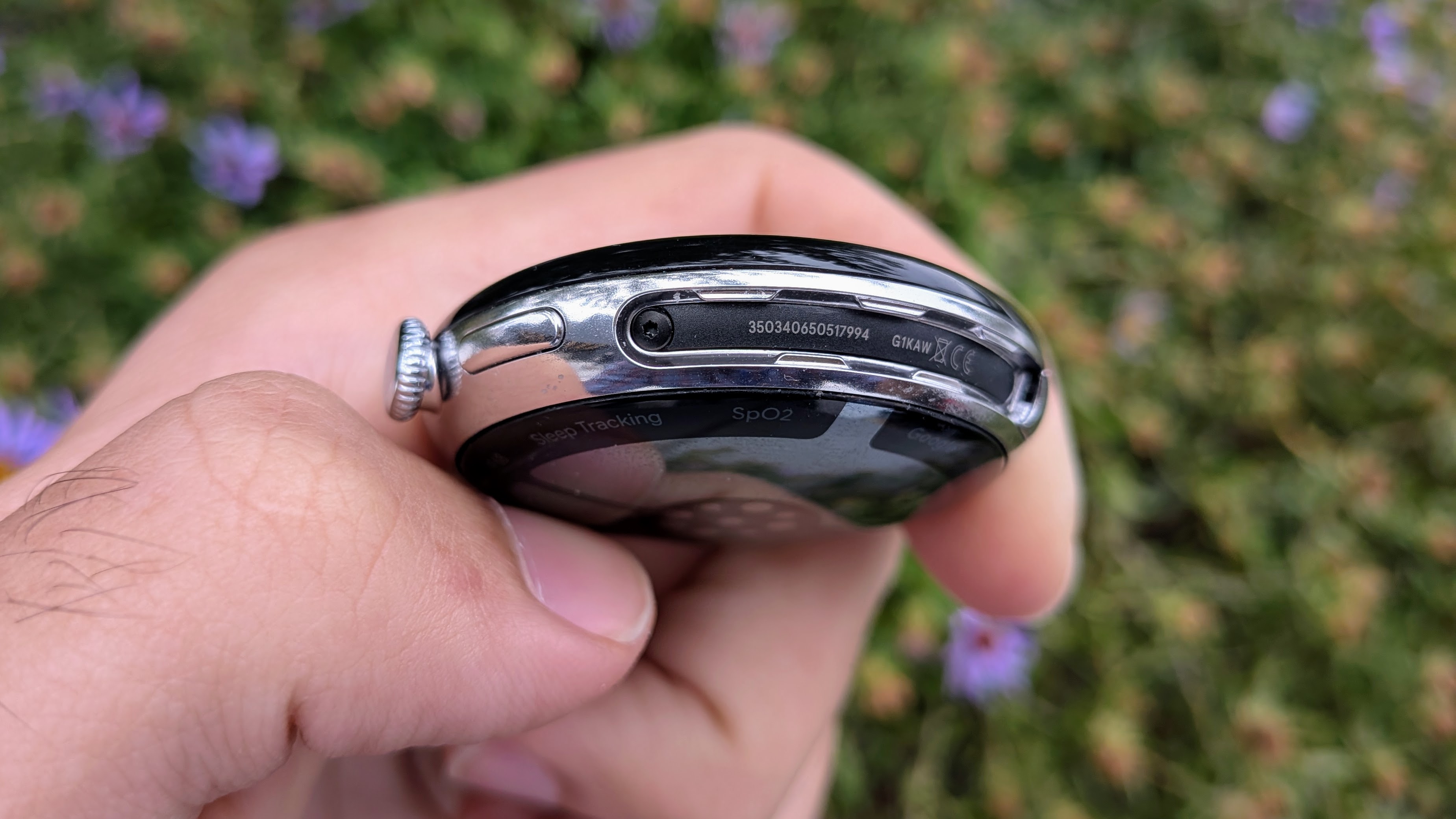

My weekly column focuses on the state of Wear OS, from new developments to the latest apps and features.
iFixit says the Google Pixel Watch 4 is the most repairable smartwatch available today. That doesn't mean you or I should try to repair it, as the actual repair process is time-consuming and challenging. That doesn't change the fact that repairability matters if we're going to take smartwatches more seriously.
Look at the official 118-page Pixel Watch 4 repair manual. It's extremely detailed on every step, safety precaution, part, and tool that you'll need, including flowcharts for every part you'll need to interact with to repair a specific part.
For mechanical nerds, or even laymen like myself, it's extremely cool to see how the Pixel Watch 4 was jigsawed together with removable parts without compromising the IP68 protection; compared to the unrepairable Watch 3, things won't break if you take it apart. You just need the technical know-how to reassemble it.
Smartwatch repair for dummies

For battery replacement, Google told me it aimed to make it as simple as repairing a quartz watch; you can remove the back with exposed screws in the band slot, using tools that'll only cost about $10 on iFixit. The battery itself isn't for sale yet, but let's assume it'll be no more than a Pixel phone battery ($30–50).
You should use your one-year limited warranty first and let the pros handle it, Google said, but you can do it if you're technically confident or past the first year. The iFixit guide certainly makes it look straightforward.
For every other component, though, they likened it to fixing a mechanical watch, something that's not for the faint of heart.
iFixit gave the Watch 4 a 9/10 rating for repairability, saying they were "inside within minutes" and had little trouble detaching the display from the replaceable gasket, then removing the Snapdragon W5 Plus Gen 2. But they do that kind of thing for a living.
If you get something wrong during disassembly or reassembly, you're left with an out-of-warranty bundle of parts; you'll have to give it to a repair person and hope they can put Humpty Dumpty back together again.
As someone who gets overwhelmed assembling Ikea furniture, I'll pass. Still, the Pixel Watch 4's repairability has proven that we can (and should) expect better from other brands.
Smartwatch repairability matters, even if YOU can't do it

If you're lucky, you'll never have to take advantage of the Watch 4's repairability during its three-year software support window. A battery swap wouldn't be too expensive, but iFixit suggested a new display will cost about $100, high enough that "lots of people won’t choose repair" when they can upgrade instead.
Still, you have the option, and local repair shops are more likely to offer their services if you can point them to extensive step-by-step documentation.
Meanwhile, iFixit gave the Apple Watch S10 a 3/10, because it relies on tight seams and adhesive with no official guides; without Applecare, you're out of luck. And iFixit cut ties with Samsung in 2024 because it relies too much on adhesives that made replacement parts too expensive — though the Galaxy Watch Ultra got a solid 7/10.

If I'm buying an $800 Apple Watch Ultra 3 designed to last for 5+ years of software support, I want someone to be able to take it apart and fix a faulty component, even if it's not me or Apple doing it.
The same principle applies to Garmin watches; they're more expensive than ever and use AMOLED displays that could show burn-in after a few years. People love making Garmin watches last for years, but if something goes wrong, most non-Fenix Garmin watches allegedly use glue for waterproofing, so you have to hope Garmin will send you a new model.

Repairability gives us more third-party backup options if warranty repairs are either unavailable or too expensive. It also reduces waste and makes it more likely that we could get a thriving refurbished market for older watches, with proper retrofits instead of skin-deep fixes.
Smartwatches are still treated like accessories that get a pass in areas like repairability, and I can accept that for a $100 fitness band. But for expensive, rugged fitness watches or "Ultra" flagships that cost as much as a phone, I think it's fair to ask that these brands stop taking design shortcuts, switch out glue for screws, and make repair guides and parts available at launch.
If the Pixel Watch 4 did it, why not bigger, more expensive watches?
Fast and fixable
The Google Pixel Watch 4 is one of the best Android smartwatches. Aside from its repairability, you get satellite SOS for emergencies, dual-band GPS for accurate training data, and summonable Gemini using Raise to Talk. It has other key upgrades over the Watch 3 like a 3,000-nit display and improved battery life.







